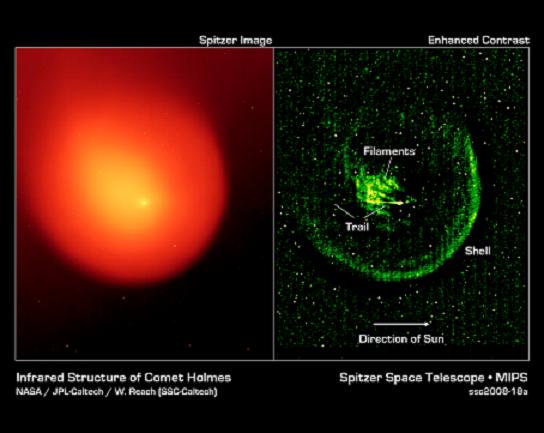Sol88
Philosopher
- Joined
- Mar 23, 2009
- Messages
- 8,437
Electric comet
METHOD OF ROCK CUTTING EMPLOYING PLASMA STREAM
When Comets Break Apart
The Electric Universe researchers are ready to turn the tide of comet theory back toward electrical phenomena. Electricity, not heat, is at work on the surface of Wild 2. If this is true, then a second problem is solved. We don't have to wait for the rare impact to form the cratered landscape. The craters we see are being carved by electric arcs. These arcs also cause the (surprising) dark color of every comet we've seen up close. They produce the (surprising) x- rays that the ROSAT x-ray observatory discovered. And they create the (surprising) streams of rocky particles that pummeled the spacecraft, Stardust.
METHOD OF ROCK CUTTING EMPLOYING PLASMA STREAM
A method especially useful for cutting and breaking hard rock such as granite from the face of a tunnel is disclosed. A pattern of slots are cut into the rock face by directing a high velocity plasma jet on the rock face to melt a portion of the rock face and produce a molten film and applying electrical power to the plasma-jet and a cooperating electrode to flow electric current through the molten film to further heat the molten film and melt additional rock to form a slot. After the pattern of slots are formed, spaced plasma streams are introduced into the slots and electrical power of a frequency effective to produce dielectric heating in the rock is applied through the plasma streams to produce a heated region within the rock mass which thermally stresses and severs that rock mass portion into fragments.
When Comets Break Apart
The unexpected breakup of comets, some at considerable distances from the Sun, has long baffled comet researchers. But there is no mystery if comets are solid bodies discharging electrically as they move into regions of different charge in the Sun’s electric field.
Thus, according to Sagan and Druyan, “the problem is left unsolved”. But the authors appear to have found a clue without recognizing its significance. “Splitting and jetting may be connected … At the moment Comet West split, the individual fragments brightened noticeably, and propelled large quantities of dust into space in the first of some dozen bursts”. The same could be said for the more recent Comet Linear breakup.
Why would intense, high-velocity jets and explosions of dust, traveling at supersonic speeds, precede the fragmentation of a comet nucleus? In the electrical model of comets, the answer is obvious. The behavior of comets will never be understood in simple mechanical terms because they are electrified bodies orbiting within the plasma environment of an electrified Sun. The solar plasma behaves like a very good conductor in the Sun's electrical connection with the galaxy. And just like any good conductor, the electric field within the plasma is very low. But unlike good metal conductors, the solar plasma is of extremely low density and therefore its current-carrying ability is limited.

 idea!
idea!



 and your
and your 









